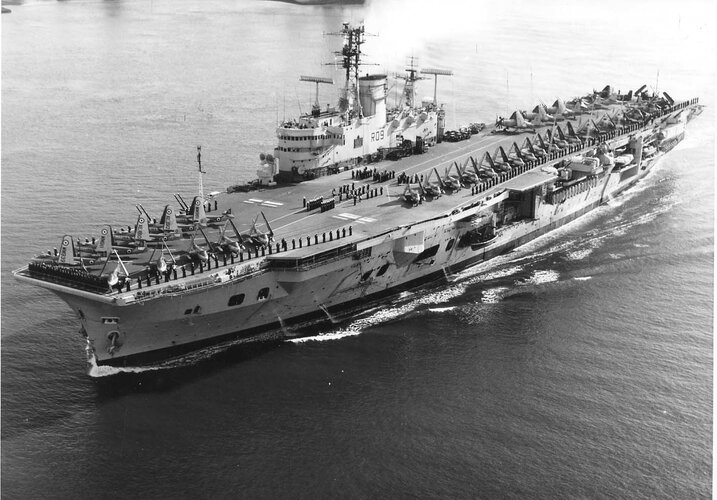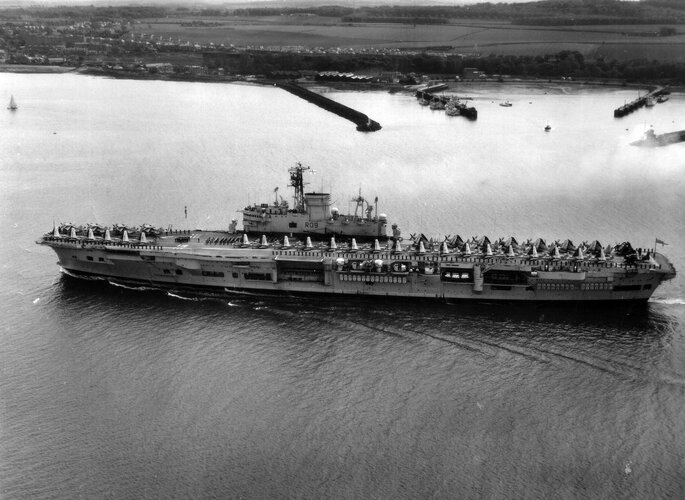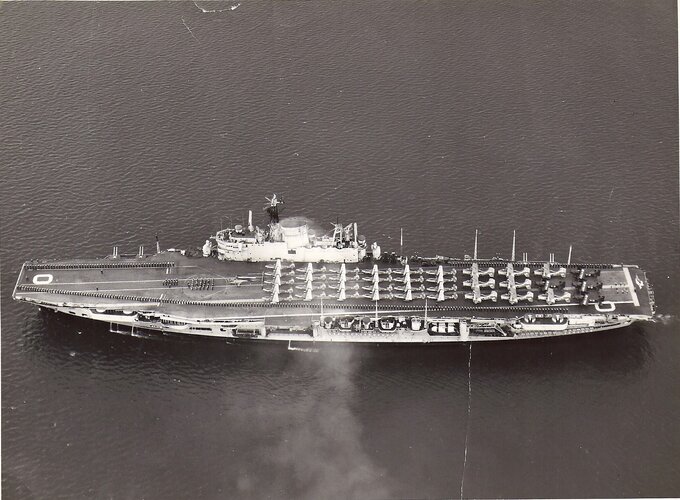Part of Post 335.
1956 Two of the Argus class plus Ocean and Theseus take part in the Suez operation.
With a better air group than real world Eagle, Albion and Bulwark they do more damage to the Egyptians.
Link to Post 416 which is Part One of what I think the state of play in my "Version of History" would have been in October 1956.
Some plausibility/feasibility checks before I write Part Two.
My
"Version of History" is based on the cancellation of the Audacious, Centaur & Tiger classes in January 1946 and starting the design of the Real-1952 Aircraft Carrier in 1946 instead of 1952. The plan in January 1946 would be to have 9 in service before World War III started. That is 3 built instead of completing the Audacious class and 6 built instead of modernising the Illustrious class. However, this was reduced to 6 ships (instead of Ark Royal, Eagle & 4 modernised Illustrious class) by the time the 9-Year Plan of 1948 was written and only 2 out of 6 ships would be completed before 1957.
At present in my
"Version of History" long-lead items for the first trio are ordered in 1948, the hulls are ordered in 1949 and they are laid down in 1950 with Argus & ALT-Eagle completed in 1955 to Standard B & ALT-Hermes completed in 1958 to Standard A. The second trio are ordered in 1951 as part of the 1951 Rearmament Programme, but they weren't laid down until 1954 and completed 1959-61 to Standard A.
The theory behind that is that the money spent after January 1946 on completing Ark Royal, Eagle, the Centaur class & the Tiger class and the 1950-58
"Great Rebuild" of Victorious & Centaur's 1956-58 refit would go a long way towards paying for 6 new & better ships on the theory that
"steel is cheap & air is free". The first pair were completed in 1955 because that's when Ark Royal was completed. ALT-Hermes is laid down in 1950 & completed in 1958 because she takes the place of the 1950-58
"Great Rebuild" of Victorious. As I understand it the decision to complete the Tiger class was taken in 1951 but work on them didn't begin until 1954. That is why Courageous, Furious & Glorious are ordered in 1951 but not laid down until 1954 and they are completed 1959-61 because that's when the Tiger class were completed. The money spent on Real-Hermes 1951-59 is spent on building Courageous, Glorious & Furious 1951-59. The money spent on Real-Eagle's 1959-64 is either spent on the first major refits of Argus & ALT-Eagle (in which they were upgraded to Standard A) or the portion spent 1959-61 is instead spent on completing Furious & Glorious.
This leads me to my first question, which is, what are the earliest possible dates for putting the Type 984 radar, CDS & DPT into service? I'm thinking of delaying the completion of Argus & ALT-Eagle so they can be completed with them. However, if what Marriott wrote about Ark Royal being in dockyard hands for 32 of the first 48 months after she was completed is true, then Argus (which takes the place of Ark Royal) is in dockyard hands for 32 out of the first 48 months after she was completed and could have been fitted with them then.
I've also heard that a digital version of CDS was cancelled as part of the 1949 defence cuts. So my next question are. Is that true? Would it have been better than the analogue version? Would it have been as reliable as the analogue version? Had the analogue version been cancelled in 1949 could the digital CDS have been put into service at the same times as the analogue version and at around the same cost?
I made the original suggestion to build six 1952 Aircraft Carriers in Post 291. In that post Hercules & Leviathan weren't suspended in 1946 and were completed in 1948 as a sop to the Admiralty for the cancellation of the Audacious, Centaur & Tiger classes. The money to complete them (which shouldn't be much) comes from the money saved 1946-48 by cancelling the Audacious, Centaur & Tiger classes. What I didn't write in that post is that some of the money saved is used to complete the 8 Daring class destroyers sooner, say advancing it from 1952-54 to 1948-50, but the money spent on the Daring class after 1948-50 is spent on the 1952 Aircraft Carriers.
I also wrote in Post 291 that the Illustrious, Colossus & Majestic classes were to be refitted to operate 30,000lb aircraft as part of the 1948 Plan. This is because the Illustrious class was to be kept in service until it was replaced by the Argus class while the light fleet carriers were to serve as trade protection carriers in World War III and needed to be capable of operating the Sea Hawk, Sea Venom & Gannet.
However, the Sea Hawk FGA.6 had a loaded weight of 16,200lb (with 2 drop tanks and two 500lb bomb), Sea Venom had a loaded weight of 15,80lb and the Gannet AS.1 had a loaded weight of 19,600lb. All are according to the Putnams British naval aircraft book. The Implacable and Majestic classes were designed to operated 20,000lb aircraft. Does that mean they could have operated the Sea Hawk, Sea Venom and Gannet without further modification?
Is that's true it saves the expense of refitting Implacable, Indefatigable, Hercules, Magnificent & Leviathan to operate 30,000lb aircraft. It that's true it also means that the Colossus class ships only have to be upgraded from 15,000lb aircraft to 20,000lb aircraft, which will be a lot more feasible than refitting them to operate 30,000lb aircraft. We got part of the way there in the
"Real World" because according to Friedman Glory, Ocean, Theseus, Triumph & Vengeance had their arrester gear upgraded to handle 20,00lb aircraft 1949-51 and Warrior had a refit 1954-56 which included upgrading her hydraulic catapult to operate 20,000lb and fitting a mirror landing sight, blind landing radar & an interim angled flight deck.
In Post 244 I asked.
Is inventing the angled flight deck earlier allowed? Say someone thinks of it in time for the concept to be tested by Warrior in 1948 instead of the flexible deck trials she conducted in the "Real World". If it is allowed that would have been 4 years before the real trials aboard Triumph in 1952.
Nobody said yes or no. I think it's perfectly plausible provided someone has the
"eureka moment" at least 4 years earlier.
Is inventing the mirror landing sight 4 years earlier allowed? As far as I know all the stuff needed to make one existed 4 years earlier, it would be relatively cheap to develop & produce in the quantities required and in common with the angled flight deck only requires someone to have the
"eureka moment" at least 4 years earlier.
In post 250 I asked.
Is taking less time to develop the steam catapult allowed?
Nobody said yes or no. So I'm asking the question again. I also wrote.
According to Freidman steam catapults were first suggested in 1936, but nothing was done at the time because at the time really powerful steam catapults weren't required. However, in 1944 the person that suggested it heard that the Germans were using slotted-cylinder steam catapults similar to the type that he proposed and in November of that year went to France and brought back enough German material to construct an experimental slotted-cylinder steam catapult as Shoeburyness.
Therefore, bringing the BXS.1 trials forward to 1947 is probably going too far, which is unfortunate, because it (in combination with completing the other Eagle instead of modernising Victorious and the earlier development of the angled flight deck) would have improved the quality of the RN's strike carrier force in the 1950s & 1960s.
Is 1947 going to far? And if so is 1949 reasonable?
The final questions are addressed to
@uk 75 because it's his thread. The Point of Departure was that the Post-war Austerity Era was even more austere than the real one which was why the extra ships were cancelled in January 1946. However, in Post 291 I also wrote.
Plans to fully modernise the Illustrious class were abandoned by 1948 in favour of 6 new carriers that would be ready in time for the "Year of Maximum Danger". However, the Illustrious & Colossus/Majestic classes would be refitted to operate 30,000lb aircraft. This looked affordable to the Admiralty of 1948 because the economy was on the mend. For example the personnel cuts of the late 1940s were avoided so there was no need to lay up the King George V class battleships 1949-50 and downgrade Vanguard to a training ship in 1949.
@uk 75 will you allow me the quid pro quo? That is a better British economy in circa 1949 for a worse British economy in January 1946. In addition to avoiding the personnel cuts of the late 1940s, I want to avoid the late 1949 cuts to the aircraft programme and have less severe cuts to the FAA. In the latter case it was (if I remember correctly) cut to only 144 aircraft in 12 squadrons in the late 1940s and I want 300 aircraft in 25 squadrons. Will you allow me to do that?

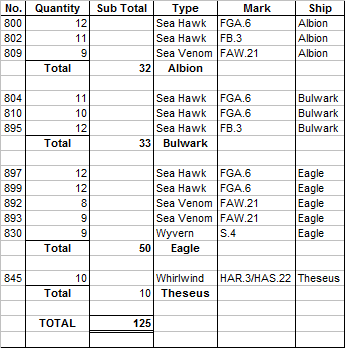
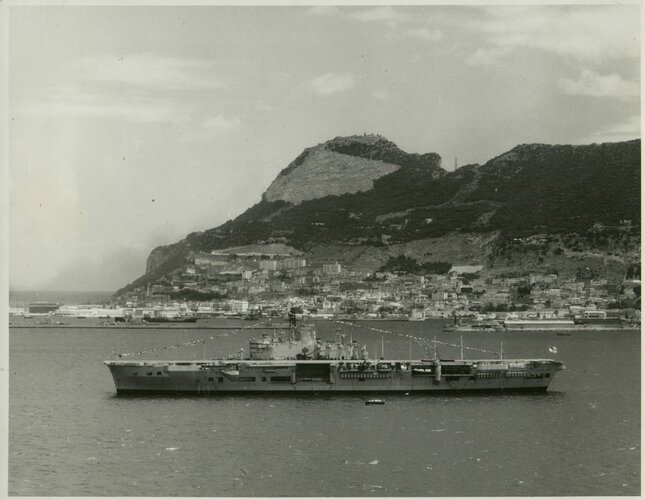
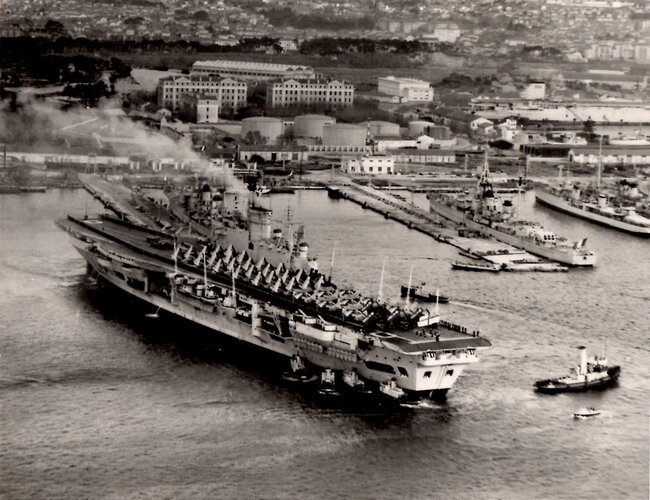
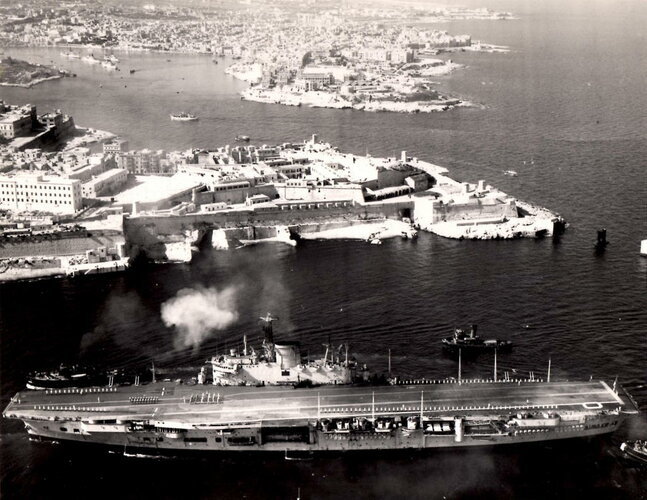
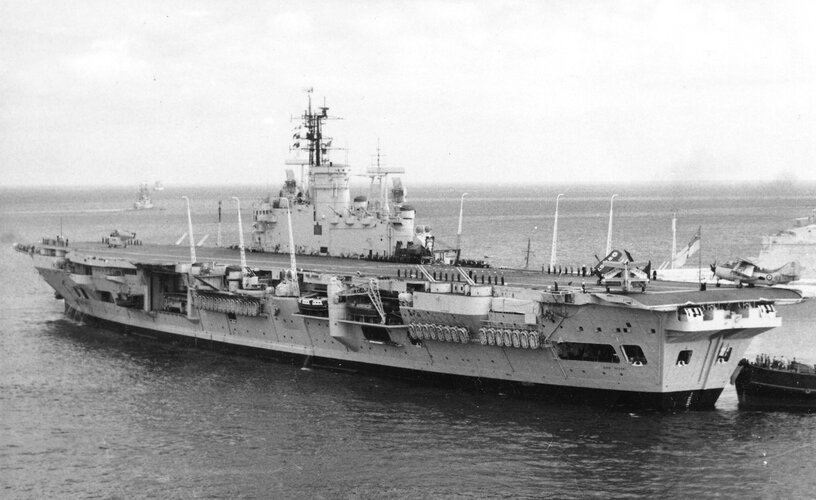
![ARK ROYAL 1956 [1].jpg ARK ROYAL 1956 [1].jpg](https://www.secretprojects.co.uk/data/attachments/250/250170-018d02186eaf2a275c6d5643b0f8c53e.jpg)
